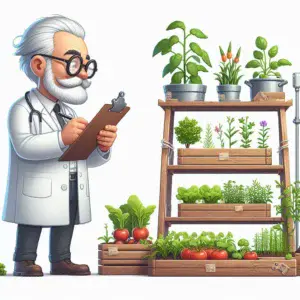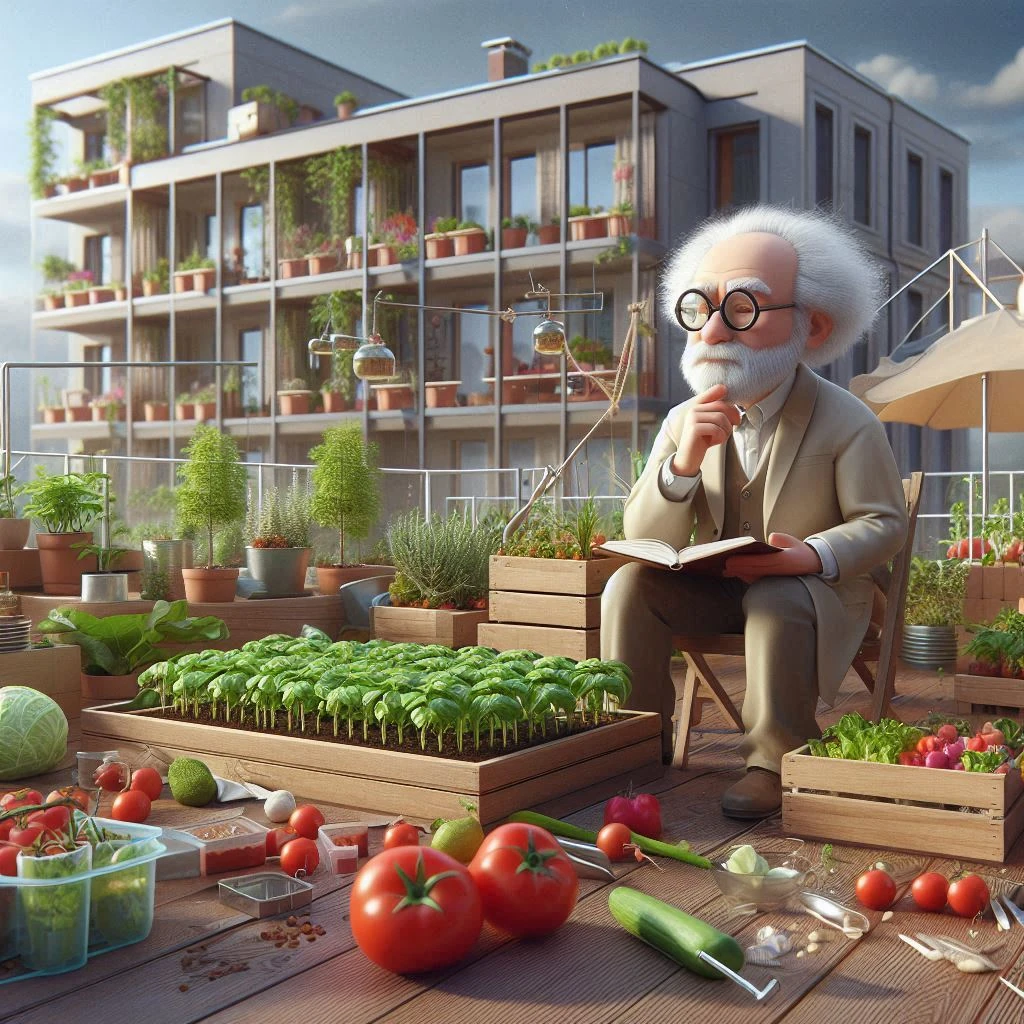Smart gardening is changing the way we care for our plants and outdoor spaces, moving beyond just regular watering and weeding. This tech-driven approach lets you manage every aspect of your garden with precision and ease, no matter where you are.
 Shifting from traditional gardening methods to smart gardening comes with a load of benefits. Just for starters, it saves time and water, helping your plants to thrive under perfect conditions. You can easily monitor and adjust the conditions of your garden from your smartphone, contributing to a greener planet without the guesswork.
Shifting from traditional gardening methods to smart gardening comes with a load of benefits. Just for starters, it saves time and water, helping your plants to thrive under perfect conditions. You can easily monitor and adjust the conditions of your garden from your smartphone, contributing to a greener planet without the guesswork.
Some folks might think that smart gardening sounds too complicated or expensive but fear not. The technology is increasingly user-friendly and becoming much more affordable. Many systems have been designed with beginners in mind by ensuring that they’re easy to install and operate. The key is to embrace the change and discover the convenience and efficiency that smart gardening brings, whether it’s a few containers growing herbs and vegetables, a raised bed, a vertical garden or a large plot.
Modern gardening tools equipped with technology aren’t just about automation; they empower you to make informed decisions that benefit both your plants and the environment. Automation can redefine what it means to have a green thumb, blending traditional wisdom with cutting-edge innovation.
As we explore smart gardening further, think about how these tools could fit into your own gardening routine. Imagine a lush, healthy garden that thrives with minimal intervention, allowing you to spend more time enjoying your outdoor oasis instead of toiling in it. This technological evolution invites everyone to participate in gardening, transforming it from a chore into a smart, enjoyable experience.
Essential Smart Tools for an Automated Garden
Smart irrigation systems have become a game-changer for gardeners. They don’t just water your plants; they water them just right. These systems monitor soil moisture levels, ensuring your garden receives the perfect amount of water, which can help save on those high water bills.
Bluetooth-enabled sensors are handy tools that let you keep tabs on your garden’s vital stats around the clock. They can monitor soil conditions, light exposure, and even local weather, sending real-time data straight to your phone. This insight means you can make quick, informed decisions to ensure your plants are thriving.
Automated lawn care might sound futuristic, but it’s more accessible than ever. Robot mowers can keep your garden neat and trim without you lifting a finger. These robots navigate your lawn, adjusting to different grass heights and obstacles, ensuring your yard looks great the whole year-round.
Choosing the right smart tools may feel overwhelming at first, so start with basics like a smart watering system or soil sensor. This can make a big difference. Look for tools specifically designed for simplicity if you’re new to this. Finding user-friendly options with positive reviews can ease the transition into smart gardening.
Each tool you choose should cater to your garden’s needs while improving your everyday gardening experience. Analyze a little and prioritize the aspects of gardening you find most challenging or time-consuming, then search for the tech tools that can tackle those tasks. Investing in these smart tools can end up saving both time and resources, paying for itself many times over long before t it wears out.
Creating a Tailored Automation Plan for Your Garden
Crafting a customized automation plan starts with understanding what your garden needs. Every garden is unique, so taking stock of things like plant types, soil conditions, and layout is crucial. This helps identify which areas could benefit most from automation.
Not everything in a garden needs to be automated. Striking a balance between tech and tradition to find the right harmony is the goal. Evaluate tasks that you find repetitive or time-consuming, such as or monitoring soil moisture and watering These tasks are perfect candidates for automation, freeing up time for the more enjoyable aspects of gardening.
To kickstart your automation journey, start with a clear plan. Outline what you hope to achieve. Is it saving time or reducing water waste? Or is it simply having healthier plants. Once you have that vision, choose the tools that align with your goals.
Implementing your plan doesn’t have to be daunting. Start small, integrating one or two smart tools before expanding. This gradual approach allows you to become comfortable with new technology without becoming overwhelmed.
Remember, the aim is for your garden to work in sync with the technology, enhancing the beauty and health of your outdoor space. With a well-thought-out plan, your garden will not only survive—it will thrive, giving you more time to enjoy and share the fruits of your labor.
Enhancing Integration with Home Smart Systems

If you have a smart home system you could link your garden automation to your smart home systems to create a seamless tech ecosystem. This integration allows you to control both your garden and home environments from a single interface, making it all the more convenient.
Voice control is a remarkable feature that can be incredibly useful for managing your automated garden. By connecting your gardening tools to AI assistants like Alexa or Google Assistant, you can issue commands without lifting a finger. Imagine adjusting your sprinkler system or checking soil moisture with a quick voice prompt—it makes managing your garden feel futuristic and effortless.
Switching to smart systems often brings concerns about energy consumption, but you can offset this with eco-friendly practices. Use solar-powered sensors or schedule your automated devices to operate during non-peak energy hours. This not only saves energy but also aligns with sustainable gardening principles.
Integrating smart tech in your garden doesn’t end with fancy tools; it’s about creating an environment that fits seamlessly into your life. With some thought, you can enhance your smart home setup to bring more enjoyment and less hassle to your gardening work.
The Future of Smart Gardens: Trends and Innovations
Exploring the future of smart gardening opens up exciting possibilities. AI and machine learning are stepping into the gardening field, helping predict plant needs and environmental changes. Imagine a garden that practically cares for itself based on intelligent data analysis.
Sustainability is driving innovation in garden tech, with many new tools designed to minimize environmental impact. Technologies aim to optimize resource use, supporting eco-friendly gardening practices. The integration of renewable energy sources for operating these gadgets underlines the industry’s commitment to the planet.
Personalized gardening is another trend on the rise. Data-driven insights offer tailored care suggestions for your plants, adapting to the unique conditions of your garden space. This level of customization ensures that each plant gets just what it needs to flourish.
Learning from others and sharing experiences in community platforms bring a real-world perspective to these innovations. Case studies and user experiences can offer valuable insights, helping you make informed decisions about which technologies to adopt.
The journey into the future of smart gardening is both thrilling and practical, promising to redefine how we interact with our outdoor spaces. By staying informed and embracing these innovations, you’re setting your garden—and yourself—up for a brighter, more efficient future.




